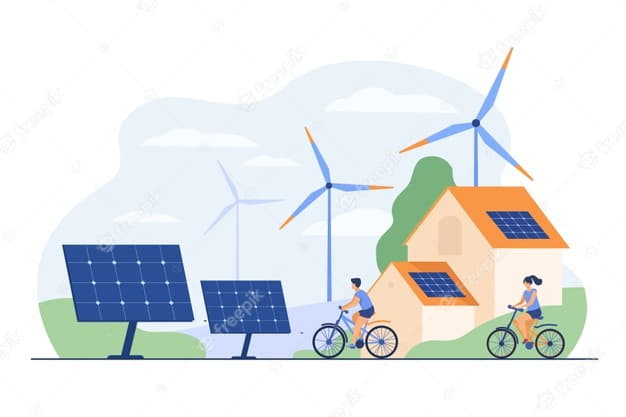Background:
To achieve the V-shaped economic recovery that India urgently needs, there is a compelling case for a large-scale demand stimulus. A green stimulus holds the potential to not only boost demand but also address pressing issues like air pollution and expedite the transition to green energy sources.
One of the major sources of air pollution in northern India is the burning of rice crop residues. This issue can be effectively mitigated by implementing a system where all crop residues are procured at a fair price. These residues can then be transformed into briquettes, offering a sustainable alternative to coal in thermal power plants.


NTPC has successfully demonstrated this approach, and it has proven cost-competitive with coal in terms of energy generation. The collection of agricultural waste for briquette production can be entrusted to private entrepreneurs, promoting decentralized investment and generating demand for conversion equipment, labor, and transportation. This initiative allows the government to combat air pollution without incurring additional costs.
Investing in electric vehicle (EV) charging infrastructure is another vital step in the green stimulus plan. EVs are environmentally friendly and cost-effective over their lifecycle. However, the lack of charging infrastructure has hindered their adoption. To overcome this barrier, a national plan should be devised to establish charging stations in cities with populations exceeding one million. The central government can provide debt guarantees to fully finance these charging stations and the procurement of electric buses for urban transportation. These measures not only stimulate demand but also enhance the air quality in heavily polluted cities.


India’s commitment under the Paris Agreement to achieve 450 GW of renewable energy capacity by 2030 aligns with the green stimulus plan. Encouragingly, the paid pricing of solar energy in rural areas offers a cost-effective solution that doesn’t necessitate extensive transmission investments. Such localized solar energy generation empowers farmers with daytime electricity for irrigation, promoting water-efficient practices. Scaling this up to encompass the thousands of villages across the country could unlock a substantial 600 GW of capacity.
Conclusion
This comprehensive plan would stimulate diverse private investments, boost government revenue, and align with India’s environmental and energy goals. Furthermore, harnessing cow dung as a renewable resource, through small village-level gas-fired power plants, can contribute significantly to energy production and income generation. A government-backed system that provides fair compensation for this resource will incentivize private-sector investment, benefiting municipalities across the country. This green stimulus plan offers a multifaceted approach to economic recovery, environmental improvement, and sustainable energy development.






I love your blog.. very nice colors & theme. Did you create this website yourself? Plz reply back as I’m looking to create my own blog and would like to know wheere u got this from. thanks
There are many themes available in the market, choose the one which suits your subject
I am glad that I found this weblog, just the right information that I was looking for! .
Thank you
I’m thoroughly enjoying your blog.
Thank you
Would you be serious about exchanging hyperlinks?
We’re a group of volunteers and opening a new scheme in our community. Your website provided us with valuable information to work on. You’ve done an impressive job and our whole community will be thankful to you.
Thank you
I went over this website and I believe you have a lot of excellent info , bookmarked (:.
Thank you
Enjoyed looking through this, very good stuff, thankyou.
Welcome
Lovely site! I am loving it!! Will be back later to read some more. I am bookmarking your feeds also.
Thank you
Greetings! Very useful advice in this particular article! It’s the little changes
“성인망가”
which will make the most significant changes. Many thanks for sharing!
Welcome
I have been looking for articles on these topics for a long time.I don’t know how grateful you are for posting on this topic. Thank you for the numerous articles on this site, I will subscribe to those links in my bookmarks and visit them often. Have a nice day